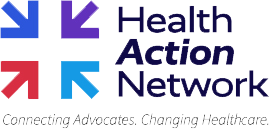A new report exposes hospitals’ cost-shifting; a recent study details the negative impact of restricting rebates in Part D; meanwhile, drug prices are found to be rising faster than other health care services; and, emergency transportation continues to drive up health care costs.
We encourage you to stay involved as implementation efforts surrounding health care reform progress. Visit the Health Action Network and be sure to let us know what’s on your mind.
Week in Review
RAND Report: Last week, an exhaustive study was released, in which hospitals were shown to charge employers and private health insurers considerably more than what Medicare pays for the same care, suggesting that hospitals’ market power has had a much bigger impact on overall prices and health care costs than previously thought. Performed by RAND, the analysis found that the average insurers and employers paid to hospitals in 2018 was 247 percent of what was paid by Medicare. Drilling further into the data, some states were actually at around 200 percent (Arkansas, Michigan, and Rhode Island), while others were more than 325 percent higher (Florida, Tennessee, and Alaska). The study also found that spending on hospital services made up 44 percent of overall spending for those with private coverage. While some offer that this cost-shifting is nothing more than standard practice for health systems in their negotiations, the prevailing concern is the extent to which hospitals use these higher commercial rates to offset potential losses from government reimbursement.
Rebate Rule Impact: According to a recently released analysis, the proposed “rebate rule” would effectively raise premiums in Medicare and increase taxpayer costs. Compiled by Matrix Global Advisors (MGA), the study took a look at evidence establishing how the rebates used by pharmacy benefit managers (PBMs) in their negotiations with drugmakers reduce costs and lower premiums in the Medicare Part D prescription drug program. Pointing to the fact that PBMs pass more than 90 percent of the rebates that they negotiate from pharmaceutical manufacturers to Part D plans, MGA researchers estimate that eliminating those rebates – as targeted by the rebate rule – would increase federal spending by almost $200 billion over the next decade.
Rx Prices: Separately (but, relatedly), drug prices have reasserted themselves as one of the primary drivers of escalating health care costs. In fact, according to new data from GoodRx, drug prices are now rising at a rate outpacing other medical goods or services. Since 2014, prices for pharmaceuticals have increased by 33 percent. To put that in context, over that same period, prices for inpatient services rose 30 percent, nursing home care rose 23 percent, and dental services rose 18 percent. Researchers noted that the prices spiked quite rapidly up till 2017, when political interest in tamping down drug prices gathered steam. However, based on their analysis, they go on to caution that the data doesn’t foretell an immediate future where Big Pharma curtails rising drug prices in any meaningful way.
Emergency Transportation: Ground and air emergency health transportation services have been established as being among the most egregious perpetrators of surprise medical billing already vulnerable patients, often at their moment of greatest medical need. In a recent study conducted by the University of Michigan and published in Health Affairs, researchers discovered that between 2013 and 2017, 71 percent of patients (in a large national insurance plan) received surprise medical bills for out-of-network ambulance transportation. While the median amount billed for air ambulance services (approximately $21,700) was substantially higher, ground ambulance transportation was more likely to result in surprise medical billing and had a larger aggregate impact at nearly $129 million per year. Shockingly, air ambulance companies have somehow managed to find their way to defending the practice of surprise billing patients.
Spotlight
The Medicaid program plays an increasingly vital role in the lives of millions of vulnerable Americans. In the wake of the coronavirus pandemic, enrollment has swelled. Recently, the Modern Medicaid Alliance updated their state-by-state dashboard which shows the impact that Medicaid has in communities across the country.
Stay safe and be well.
You can keep up with the latest by following the Health Action Network on Twitter and by liking us on Facebook. And, as always, be sure to let us know if there’s something you’d like to see covered in a future newsletter.
